-
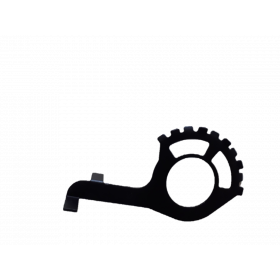 New productChain hook & chainsuck preventer
New productChain hook & chainsuck preventer- €1.99
-
 New product -42%Rear derailleur shimano deore rd-m6100-sgs 12s
New product -42%Rear derailleur shimano deore rd-m6100-sgs 12s- €38.27
- €65.99
-
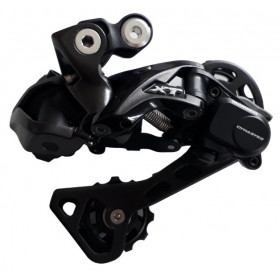 New product -20%Rear derailleur Shimano XT RD-M8050 DI2 GS 11s
New product -20%Rear derailleur Shimano XT RD-M8050 DI2 GS 11s- €311.99
- €389.99
-
 New productRear derailleur S Ride RD-M200 6 to 8s
New productRear derailleur S Ride RD-M200 6 to 8s- €16.99
-
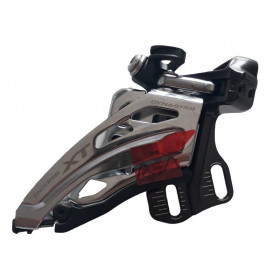 New product -17%Shimano deore xt fd-m8020-e 2x11s direct mount front derailleur
New product -17%Shimano deore xt fd-m8020-e 2x11s direct mount front derailleur- €35.68
- €42.99
-
 New product UsedMTB rear derailleur Sram NX1 11s
New product UsedMTB rear derailleur Sram NX1 11s- €29.44
-
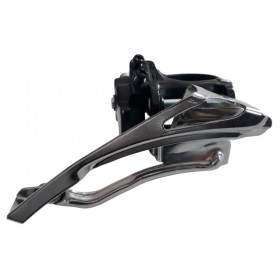 New productFront derailleur Microshift Marvo LT FD-M50
New productFront derailleur Microshift Marvo LT FD-M50- €11.99
-
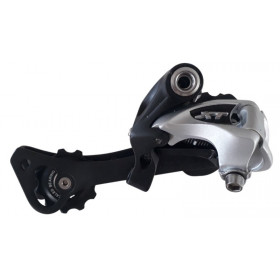 New productRear derailleur Shimano XT RD-T760
New productRear derailleur Shimano XT RD-T760- €39.99
-
 UsedFront derailleur SLX FD-M7020
UsedFront derailleur SLX FD-M7020- €9.99
-
 New productFront derailleur Shimano XT FD-M8050 DI2
New productFront derailleur Shimano XT FD-M8050 DI2- €129.99
-
 New productMicroshift derailleur 7 to 8s
New productMicroshift derailleur 7 to 8s- €10.99
-
 New product -70%Sram XX front derailleur
New product -70%Sram XX front derailleur- €48.96
- €163.20
-
 UsedMTB rear derailleur Sram XX1 11s
UsedMTB rear derailleur Sram XX1 11s- €88.99
-
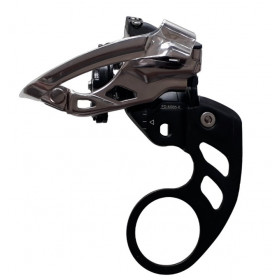 New product -49%Front derailleur Shimano XTR FD-M985-E 2x10s
New product -49%Front derailleur Shimano XTR FD-M985-E 2x10s- €53.04
- €104.00
-
 New product UsedFront derailleur shimano deore fd-m618 2x10s
New product UsedFront derailleur shimano deore fd-m618 2x10s- €11.99
-
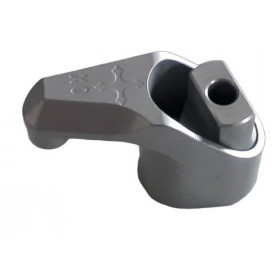 New product -70%Sram X0 rear derailleur hanger protection North Shore Billet
New product -70%Sram X0 rear derailleur hanger protection North Shore Billet- €12.00
- €39.99
-
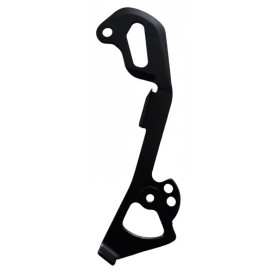 New product -20%Demi cage external Shimano XTR M980 SGS
New product -20%Demi cage external Shimano XTR M980 SGS- €15.96
- €19.95
-
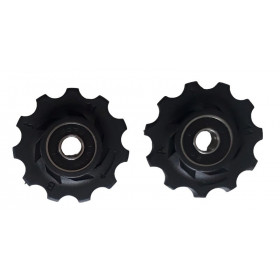 New product -50%Tension & guide pulley set BBB for Campagnolo and Shimano 11s
New product -50%Tension & guide pulley set BBB for Campagnolo and Shimano 11s- €10.25
- €20.49
-
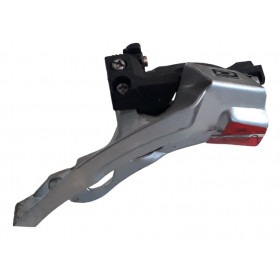 New productFront derailleur Shimano Deore FD-M590-10
New productFront derailleur Shimano Deore FD-M590-10- €32.99
-
 New product -30%Shimano Deore XT FD-M8025 2x11s front derailleur
New product -30%Shimano Deore XT FD-M8025 2x11s front derailleur- €41.99
- €59.99
-
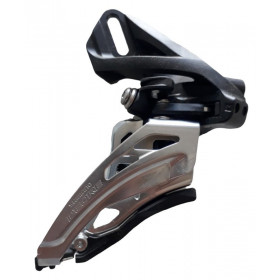 New product -55%Front derailleur shimano deore fd-m7020-11-d 2x11s
New product -55%Front derailleur shimano deore fd-m7020-11-d 2x11s- €18.45
- €40.99
-
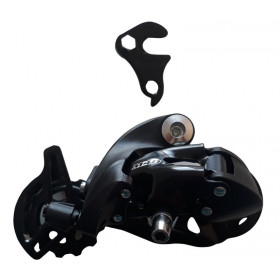 New product -55%Rear derailleur Sunrace M41 7s long cage
New product -55%Rear derailleur Sunrace M41 7s long cage- €9.00
- €19.99
-
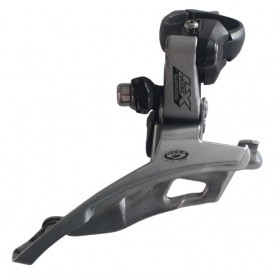 UsedShimano Deore LX FD M571 front derailleur
UsedShimano Deore LX FD M571 front derailleur- €12.99
-
 UsedRear derailleur shimano slx 11s
UsedRear derailleur shimano slx 11s- €29.99
-
 More detailsNew product Out-of-StockShimano XTR FD-M950 front derailleur
More detailsNew product Out-of-StockShimano XTR FD-M950 front derailleur- €34.99
-
 More detailsNew product Out-of-StockRear derailleur Shimano deore lx 8s
More detailsNew product Out-of-StockRear derailleur Shimano deore lx 8s- €59.99
-
 More detailsNew product Out-of-StockShimano Deore XT FD-M786 front derailleur
More detailsNew product Out-of-StockShimano Deore XT FD-M786 front derailleur- €34.99
-
 More detailsNew product Out-of-StockShimano SLX FD-M671 front derailleur 3x10s
More detailsNew product Out-of-StockShimano SLX FD-M671 front derailleur 3x10s- €25.99
-
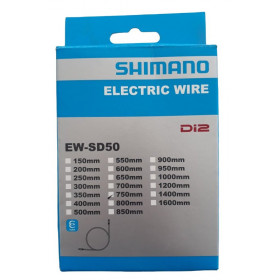 More detailsNew product -30% Out-of-StockShimano electric cable Di2 EW-SD50
More detailsNew product -30% Out-of-StockShimano electric cable Di2 EW-SD50- €25.19
- €35.99
-
 More detailsUsed Out-of-StockSram X9 rear derailleur long cage
More detailsUsed Out-of-StockSram X9 rear derailleur long cage- €49.99
Showing 1-30 of 30 item(s)
Choosing the right MTB derailleur: features, specifications, and expert tips
Whether you're a casual mountain biker or an experienced rider, the MTB derailleur plays a crucial role in your bike's transmission. This key component ensures smooth gear shifting across the MTB cassette, delivering responsiveness, pedaling comfort, and performance on all types of terrain. In this article, we’ll explore the main features of MTB derailleurs, their technical specifications, and the key factors to consider when choosing the right one for your setup.
What is a mountain bike derailleur ?
The MTB derailleur is a central component of a mountain bike’s drivetrain. It enables gear changes by shifting the MTB chain across the different sprockets of the cassette at the rear, or across the chainrings at the front. The most commonly discussed—and most used in MTB—is the rear derailleur, which is mounted on a derailleur hanger attached to the bike frame, near the rear wheel.
Its main function is to ensure smooth gear shifting in response to commands sent by the MTB shifter (also known as the gear lever). When the rider activates the lever, the derailleur cable tightens or loosens, triggering the lateral movement of the derailleur, which then pushes the chain from one cog to another. This process allows the rider to adjust pedaling effort according to the slope, terrain, or riding pace.
The front derailleur, on the other hand, was once essential for bikes equipped with double or triple chainring setups. It directed the chain across the different front chainrings of the crankset. However, the rise of single-chainring (1x) drivetrains, increasingly popular for their simplicity and reliability, has made front derailleurs less common in modern MTB disciplines such as enduro, all-mountain, and cross-country.
It’s also worth noting that the rear derailleur includes a cage—a movable arm that houses two pulley wheels—which maintains chain tension and compensates for variations in chain length as gears shift. This cage comes in different lengths depending on your drivetrain setup and the number of gears you run.
In short, the MTB derailleur is far more than just a mechanical accessory: it’s the heart of your bike’s shifting system, essential for your agility, performance, and control on all types of terrain—whether smooth, technical, or rugged.
Technical features of a MTB rear derailleur
Choosing the right MTB rear derailleur isn’t just a matter of brand or budget — several essential technical criteria must be considered to ensure compatibility, reliability, and performance within your drivetrain. Here are the key elements to look at closely:
1. Compatibility with the drivetrain
Every derailleur is designed to work within a specific gear range, usually defined by the number of cogs on your MTB cassette (e.g., 9, 10, 11, or 12-speed). It must be compatible with:
-
The number of speeds on your cassette;
-
The MTB shifter used (brands like Shimano and SRAM use different indexing systems);
-
The MTB chain, which varies in thickness depending on the number of speeds.
Example: A 12-speed derailleur will not function properly with a 10-speed cassette, even if it physically fits. This could result in chain skipping, misalignment, or premature wear of drivetrain components.
2. Cage length
The derailleur cage is the part that holds the jockey wheels (or pulleys). Its length directly affects how much chain slack can be taken up and how smoothly gears can shift.
-
Short cage: Typically used on road bikes or bikes with double or triple chainrings and tight gear ratios. It allows for quick shifting but can’t handle large differences in tooth counts.
-
Medium cage (GS): Well-suited for MTB drivetrains with two chainrings and mid-range cassettes. It balances chain tension and gear range.
-
Long cage (SGS): Recommended for 1x drivetrains (single chainring) with wide-range MTB cassettes (e.g., 11-50T). It ensures optimal chain tension even in extreme conditions.
Choosing the wrong cage length can lead to chain drops, poor tension, or rubbing against the jockey wheels.
3. Total capacity
The derailleur’s total capacity is a technical specification indicating the maximum tooth difference it can handle across the entire drivetrain (chainrings + cassette). It is calculated with the following formula:
Capacity = (largest chainring - smallest chainring) + (largest cog - smallest cog)
Example: For a 1x12 drivetrain with a 10-51T cassette, the required capacity is:
51 - 10 = 41 teeth.
You must ensure the derailleur is designed to accommodate that range.
If the derailleur lacks sufficient capacity, you may experience excessive chain tension or derailments in extreme gear combinations (e.g., large chainring + large cog or small ring + small cog).
4. Mounting type
The way the derailleur attaches to the MTB frame is another important factor:
-
Standard hanger mount (most common): The derailleur is screwed onto a removable derailleur hanger, which is bolted to the frame. In case of impact, only the hanger breaks, protecting both the frame and the derailleur. This is the standard setup on most mountain bikes.
-
Direct mount: Used by brands like Shimano to simplify installation, improve rigidity, and reduce interference with the chainstay. This mounting style requires a compatible frame or adapter.
-
UDH (Universal Derailleur Hanger): A newer standard introduced by SRAM, offering broader compatibility between frames and derailleurs. UDH also supports the integration of electronic drivetrains like SRAM Transmission (T-Type).
Always check what type of derailleur hanger your bike uses before buying a new derailleur.
Understanding the technical specifications of a MTB rear derailleur is essential to ensure smooth shifting, avoid mechanical issues, and get the most out of your bike on any trail. A poorly matched derailleur can quickly ruin your ride—and your drivetrain.
Take the time to evaluate compatibility, cage length, gear capacity, and mounting type to select a derailleur that meets your riding style and setup. It’s a small detail that makes a big difference in performance.
In summary
| Shimano Range | Ideal Use | Speeds | Key Advantages |
|---|---|---|---|
| Deore | Leisure, touring | 10–11 | Robust, affordable, reliable |
| SLX | Trail, all-mountain | 12 | Great value, Shadow RD+ technology |
| XT | Intensive sport riding | 12 | Lightweight, smooth, high-performing |
| XTR | XC competition | 12 | Ultra-light, precise, premium materials |
Whether you're a beginner or an experienced mountain biker, Shimano offers a derailleur to match your needs, combining performance, durability, and riding pleasure across all types of terrain.
Focus on Shimano MTB derailleurs
In the world of mountain biking, Shimano stands out as a global benchmark for drivetrain components. Renowned for the reliability, durability, and constant innovation of its products, the Japanese brand offers a comprehensive range of Shimano MTB derailleurs to suit all levels of riders — from casual users to elite competitors.
1. Shimano Deore: reliable and affordable
Designed for occasional or regular riders, Shimano Deore delivers solid build quality at an accessible price point. It is particularly appreciated for:
-
Its durability on mixed terrain (gravel paths, forest tracks, light trails),
-
Broad compatibility (typically 10 or 11-speed drivetrains),
-
Easy maintenance, ideal for beginners.
Perfect for touring bikes, light trail use, or entry- to mid-level electric mountain bikes (e-MTBs).
2. Shimano SLX & XT: balance between performance and budget
The SLX and XT groupsets represent the core of Shimano’s performance offering in sport MTB:
-
Shimano SLX: Highly popular for All-Mountain, Enduro, or Trail bikes. It combines precision shifting with solid resistance. It inherits technologies from higher-end groups while keeping costs manageable.
-
Shimano XT: A step up, aimed at demanding riders. It offers better weight optimization, smoother operation, and higher-grade materials like machined aluminum. Frequently used in amateur racing or intensive use.
Both groups are commonly paired with 1x12 drivetrains, featuring wide-range cassettes (e.g., 10-51T) for maximum adaptability.
3. Shimano XTR: the pinnacle of performance
Built for elite competition, the Shimano XTR is the flagship of the range. It stands out for:
-
Its ultra-lightweight construction, using carbon fiber, titanium, and high-end alloys,
-
Unmatched shifting precision, even under high loads or uphill,
-
Quiet, responsive performance even on the roughest trails.
Ideal for Cross-Country (XC) and Marathon MTB, where every gram counts and performance is non-negotiable.
4. Shadow RD+ technology: stability on technical terrain
Mid- to high-end Shimano derailleurs (starting with 10-speed Deore) feature Shadow RD+ technology, which offers:
-
A low-profile design that keeps the derailleur tucked in, reducing impact with trail obstacles (roots, rocks, branches),
-
An adjustable chain stabilizer (clutch lever) that significantly reduces chain slap and gear skipping on rough terrain.
The result: a more stable derailleur, a tighter chain, and quieter shifting — a major advantage for enduro, downhill, or technical trail riding.
5. Shimano shifters: ergonomics and responsiveness
A well-matched Shimano shifter enhances the rider's overall experience. Shimano designs its controls for intuitive use, with Rapidfire Plus technology, which allows for:
-
Shifting multiple gears in a single click,
-
Instant gear response,
-
Seamless compatibility with Shimano cassettes and chains.
Shimano's MTB drivetrain components are trusted worldwide for their proven performance, from weekend rides to World Cup podiums.
How much does an MTB derailleur cost ?
The price of a mountain bike derailleur varies depending on the range, technology, and brand. Here are some general price points:
-
Entry-level: between €20 and €50
-
Mid-range: between €60 and €100
-
High-end: up to €200 or more (e.g., Shimano XTR or SRAM XX1)
Make sure to also check compatibility with your MTB chain and cassette to avoid any unpleasant surprises.
When should you replace your MTB derailleur ?
While a mountain bike derailleur is built to withstand the shocks and stresses of off-road riding, it isn’t indestructible. Over time, natural wear, trail impacts, and poor adjustments can all affect its performance. Recognizing the signs of a failing derailleur is essential to avoid breakdowns mid-ride or further damage to your drivetrain.
Signs that a replacement is necessary:
Frequent chain drops
If your chain often jumps off, especially without any shifter input, it may indicate a worn guide pulley, a bent cage, or weakened internal springs that no longer maintain proper tension.
Imprecise or delayed gear shifting
If your gears hesitate, skip, or require multiple clicks to shift, this can point to internal tension issues, faulty indexing, or general mechanical fatigue.
Bent derailleur cage (often after a crash)
A side impact—common in mountain biking from rocks, roots, or falls—can bend the derailleur cage or even its body. Even a slight misalignment can throw off shifting and chain tracking.
Excessive play in the mechanism
Noticeable lateral or vertical play in the derailleur usually signals worn bushings or springs. This looseness often leads to erratic behavior, especially on technical terrain.
Noisy or seized pulleys
The derailleur pulleys spin on small bearings or bushings. If you hear grinding, squeaking, or feel resistance, this may be due to lack of lubrication or internal failure—warranting replacement.
Structural damage
A cracked hanger, stripped tension screw, or fractured derailleur body means the part must be replaced. Such damage often follows a hard crash or results from poor drivetrain maintenance.
What maintenance can still fix:
Before opting for a full replacement, some issues can be resolved with proper preventive care:
-
Regular cleaning with warm water, soft brush, and mild degreaser
-
Lubrication of pulleys and pivot points
-
Precise adjustment of high/low limit screws and cable tension
-
Replacement of the cable or housing if shifting feels sluggish or erratic
-
Checking the derailleur hanger alignment—often overlooked but critical
A well-maintained derailleur, combined with a clean chain and healthy cassette, can perform reliably for multiple seasons—even on demanding trails.
Here is the full English translation of your paragraph:
Good to know: average lifespan
| Riding Style | Estimated Derailleur Lifespan |
|---|---|
| Leisure (occasional, flat trails) | 2 to 4 years |
| Regular Trail / All-Mountain | 1 to 3 years |
| Enduro / Competition | 1 to 2 years (depending on maintenance) |
| E-MTB (Electric Mountain Bikes) | More stress → faster wear |
In summary, as soon as your drivetrain starts to lose fluidity, your gear shifts become unstable, or your derailleur shows signs of mechanical fatigue, it’s best to consider replacing it. Doing so will prevent breakdowns on the trail and ensure a smoother, safer riding experience.
Conclusion
The MTB derailleur is more than just a simple component — it’s a critical part of your drivetrain. Choosing the right model, matching it with a compatible MTB cassette, using a suitable shifter, and ensuring proper installation on your MTB frame are all key to smooth, trouble-free riding.
Whether you go for a Shimano MTB derailleur or a model from another brand, make sure to consider your riding style, your budget, and your drivetrain setup.
Looking for the best derailleur for your mountain bike ?
Browse our selection of new and pre-owned models, fully tested and inspected — all at unbeatable MTB derailleur prices !
